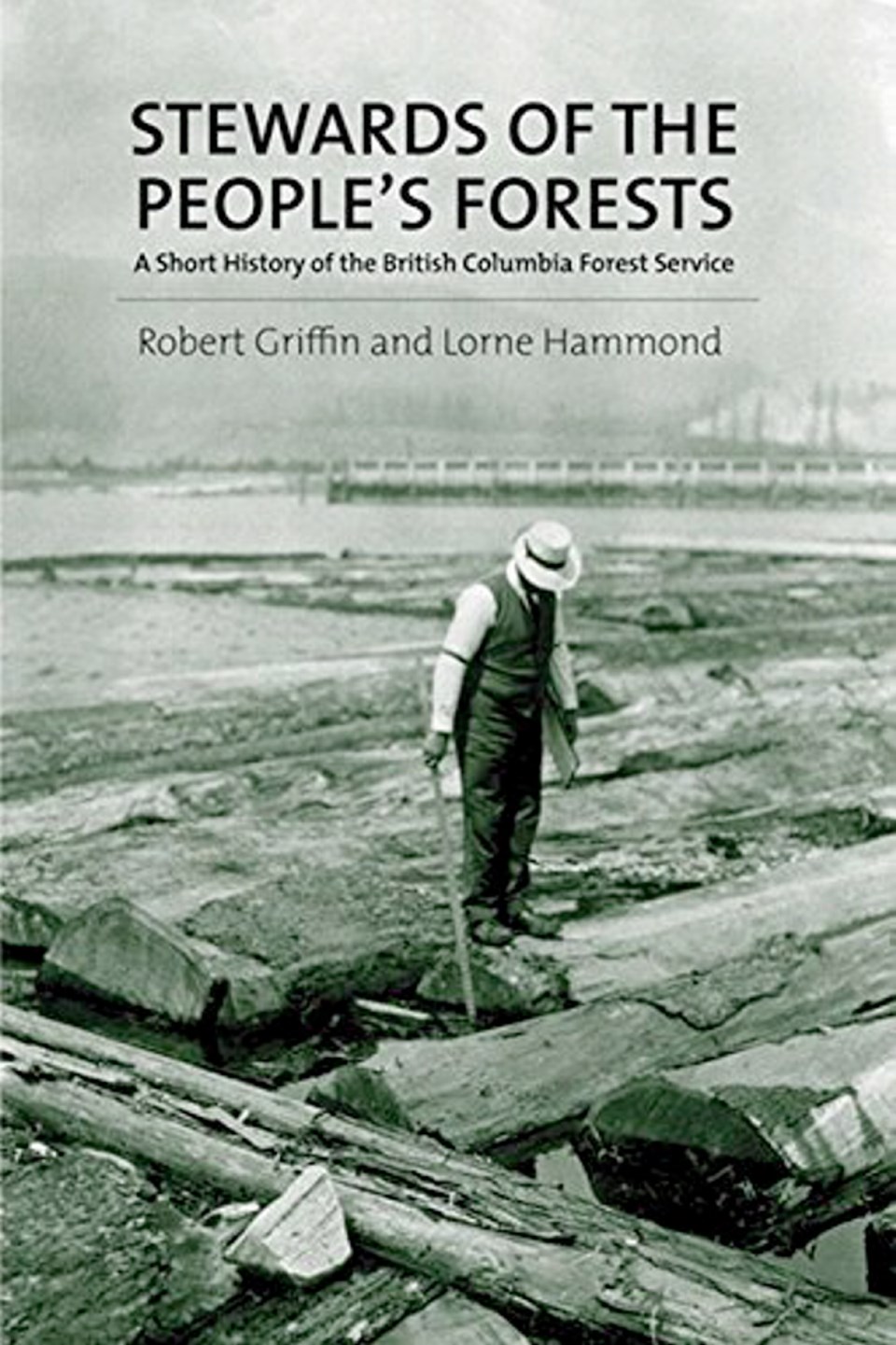By Robert Griffin and Lorne Hammond
Royal B.C. Museum, 303 pp., $22.95
Just over a century ago, the provincial government set up a branch dedicated to the management of British Columbia’s forests.
At the time, most of the forestry work being done in the province was on a small scale, but that was about to change. Industrial timber harvesting, which required heavy investments in capital and equipment, was arriving, and the government needed a regulatory body to ensure that the wealth in our forests was managed and protected.
There was more than that, of course. The government also wanted to get full value from the trees that were being felled, and that meant greater control was needed.
The Forest Branch was set up as part of the Department of Lands. Over the years, the branch, renamed the Forest Service in 1947, took responsibility for fighting forest fires — formerly its own branch in the Department of Lands — as well as rehabilitating logged areas and more.
In Stewards of the People’s Forests: A Short History of the British Columbia Forest Service, authors Robert Griffin and Lorne Hammond tell about the development of the government's forest management office over its first century.
The first chief forester, hired when the branch was created in 1912, was Harvey Reginald MacMillan, who had taken courses in agriculture before turning his attention to forestry. After working in Saskatchewan and Manitoba and obtaining a master’s from Yale’s Forestry School, he was forced to spend 30 months in bed as he recovered from tuberculosis.
MacMillan assembled the first staff, and shaped the way the branch operated. It had its head office in Victoria, with 11 districts covering the province.
In his 1913 report, MacMillan said that the forest was growing faster than the industry, and calculated that it would take 250 years to cut the mature timber. His solution was to encourage the growth and development of the industry.
MacMillan left the branch in 1915, and made his name running his own company, one that certainly took advantage of the presence of all of that timber.
The same year, the branch entered into a partnership with F. Napier Denison, who ran the Gonzales meteorological station in Victoria. Denison provided the branch with weather reports for the entire province.
Flash forward a few decades, to the mountain pine beetle infestation that hit the province in the past 20 years. That infestation has changed the look of the Interior, since so many stands of lodgepole pine are gone.
But the mountain pine beetle was hardly new. In 1981, a large-scale outbreak was reported in the Nelson area, and the beetle was even identified as a risk in a 1914 report.
These are just snippets from the book, enough to get a sense of the detail it includes.
Griffin and Hammond have taken a thorough look at the work of some dedicated public servants, people who have done their work with little recognition until now.
Stewards of the People’s Forests will give the reader a much better idea of what it takes to manage a renewable resource such as our forests, and a better understanding of the hurdles that had to be overcome.
The reviewer is the editor-in-chief of the Times Colonist.
